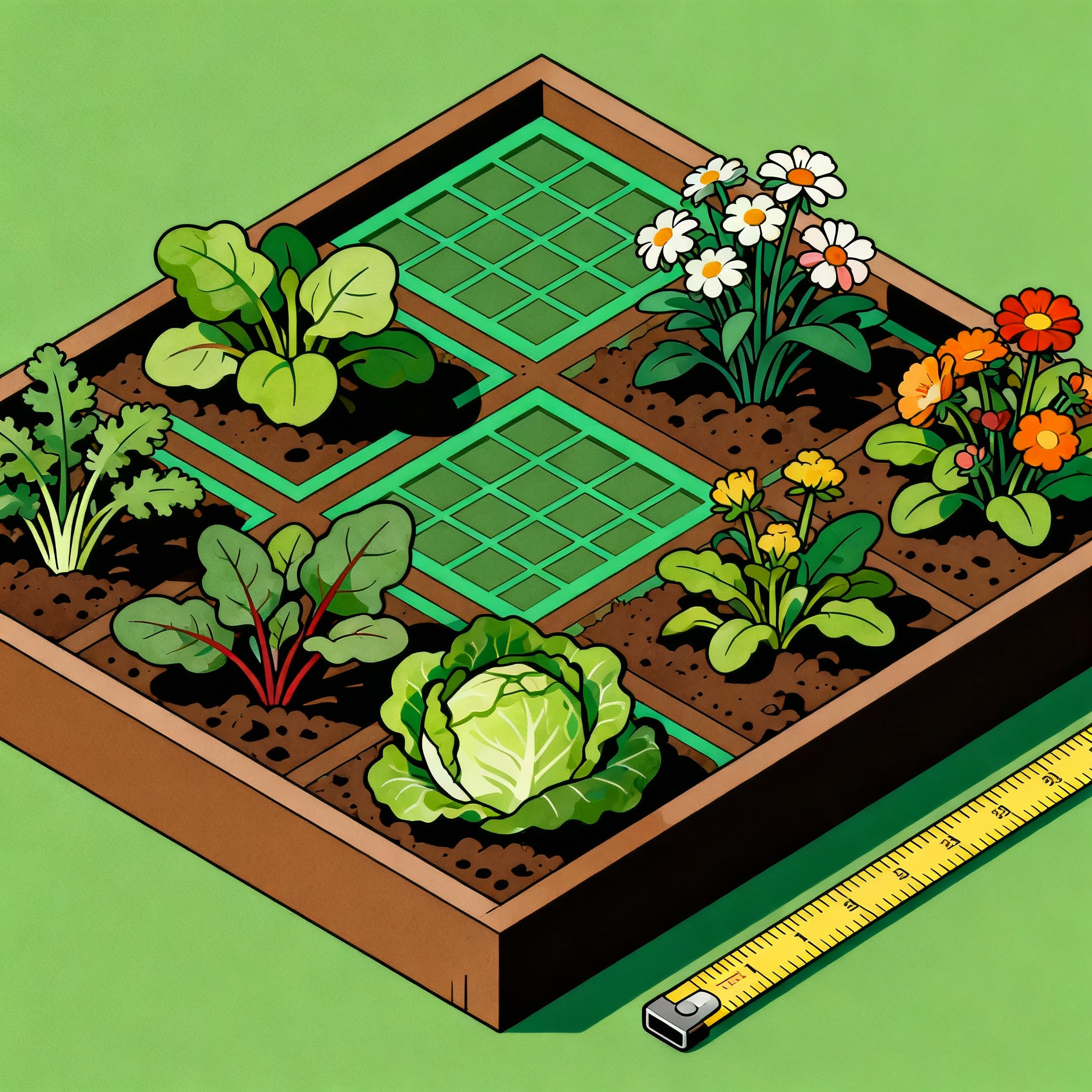Plant Spacing Calculator User Guide
What It Does:
This calculator determines the exact number of plants needed for your garden beds or hedgerows based on spacing requirements and area dimensions, ensuring optimal plant density and coverage.
How to Use:
🌱 Garden Grid Calculator
Calculate plants needed for garden beds with two grid layout options.
- Choose Grid Type:
- Square Grid – Traditional straight rows (easier to plant)
- Offset/Diamond Grid – Staggered rows (15% more plants, better coverage)
- Enter Garden Dimensions:
- Length – Garden bed length in feet
- Width – Garden bed width in feet
- Set Plant Spacing:
- Enter spacing in inches between plant centers
- Common spacings:
- Small plants/lettuce: 6-8 inches
- Medium plants/peppers: 12-18 inches
- Large plants/tomatoes: 24-36 inches
- Shrubs: 36-48 inches
- Calculate:
- Click “Calculate Plants”
- Results show:
- Total plants needed
- Plants per row
- Number of rows
- Plants per square foot
- Coverage per plant
- Review Instructions:
- Planting layout details
- Order quantity (includes 10% extras)
- Marking and measuring tips
- Offset row instructions (if applicable)
🌳 Hedgerow Calculator
Calculate plants for hedge lines and privacy screens.
- Enter Hedgerow Length:
- Total length of hedge line in feet
- Set Plant Spacing:
- Distance between shrubs/trees in inches
- Recommended spacings:
- Dense hedge: 12-18 inches
- Medium hedge: 24-36 inches
- Privacy screen: 36-48 inches
- Windbreak: 48-72 inches
- Choose Number of Rows:
- Single Row – Standard hedge line
- Double Row – Fuller, faster coverage
- Triple Row – Maximum density/privacy
- Enter Row Spacing (if multiple rows):
- Distance between parallel rows in inches
- Typically 24-48 inches for walking access
- Field automatically appears for 2+ rows
- Calculate:
- Click “Calculate Plants”
- Results display:
- Total plants needed
- Plants per row
- Number of rows
- Total width required (for multiple rows)
- Follow Planting Guide:
- Configuration details
- Recommended order quantity
- Staggering instructions for multiple rows
- Planting and care tips
Common Plant Spacing Guidelines:
Vegetables:
- Lettuce, spinach: 6-8 inches
- Peppers, eggplant: 18-24 inches
- Tomatoes, squash: 24-36 inches
- Pumpkins, melons: 36-60 inches
Flowers:
- Petunias, marigolds: 8-12 inches
- Zinnias, cosmos: 12-18 inches
- Sunflowers, dahlias: 18-24 inches
Shrubs & Hedges:
- Small shrubs: 24-36 inches
- Medium shrubs: 36-48 inches
- Large shrubs: 48-72 inches
- Privacy trees: 60-96 inches
Ground Covers:
- Creeping thyme: 6-12 inches
- Hostas: 12-18 inches
- Daylilies: 18-24 inches
Grid Type Comparison:
Square Grid:
- ✅ Easier to plant and maintain
- ✅ Straight rows for cultivation
- ✅ Better for row crops
- ❌ Slightly less efficient space use
Offset/Diamond Grid:
- ✅ 15% more plants per area
- ✅ Better light exposure per plant
- ✅ More attractive pattern
- ❌ Slightly more complex to plant
Quick Tips:
✅ Order 10% extra – Accounts for failures and replacements
✅ Use string/stakes – Mark rows for straight planting
✅ Measure from center – Spacing is center-to-center distance
✅ Consider mature size – Space based on full-grown dimensions
✅ Stagger for hedges – Offset double/triple rows for density
Pro Tip: For hedgerows, plant in a zig-zag pattern between double rows rather than directly across from each other. This creates a fuller, more dense hedge with better privacy coverage!

Angelina Everly leads the editorial desk at Live Green Gardens, blending practical plant care, hands-on product testing, and approachable outdoor styling. She focuses on step-by-step how-tos, buyer’s guides, and small-space makeovers that work in real life and real budgets. When she’s not comparing pruning shears or setting up a drip kit, you’ll find her creating cozy corners with planters, solar lights, and pollinator-friendly picks—always with clear pros/cons and safety notes so you can buy once and garden happy.

